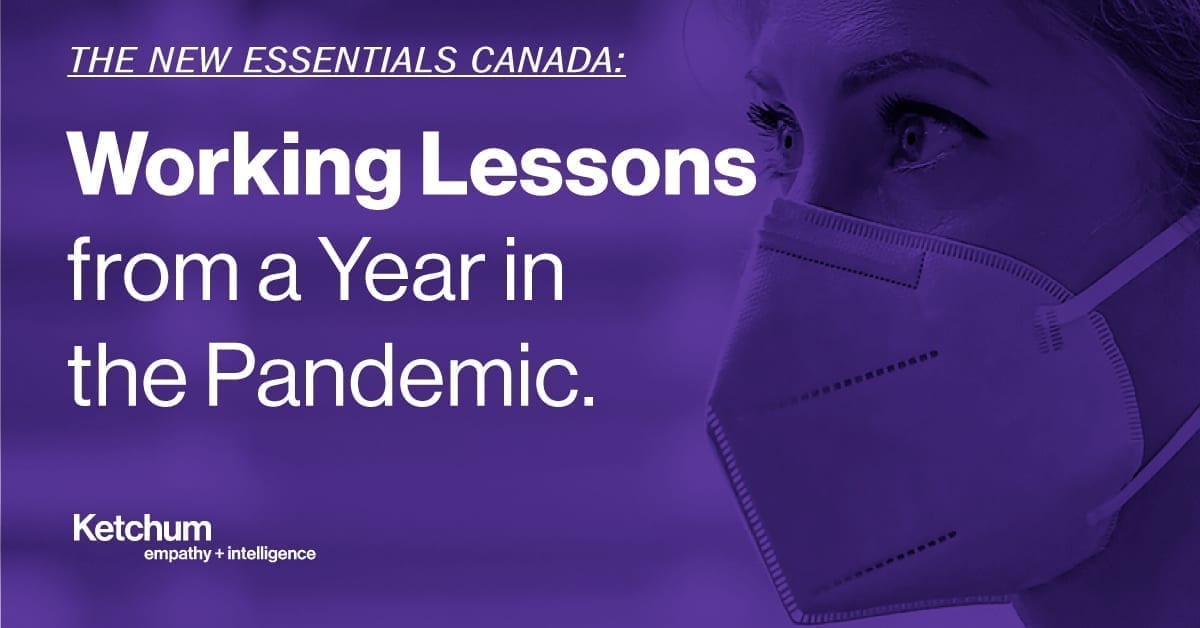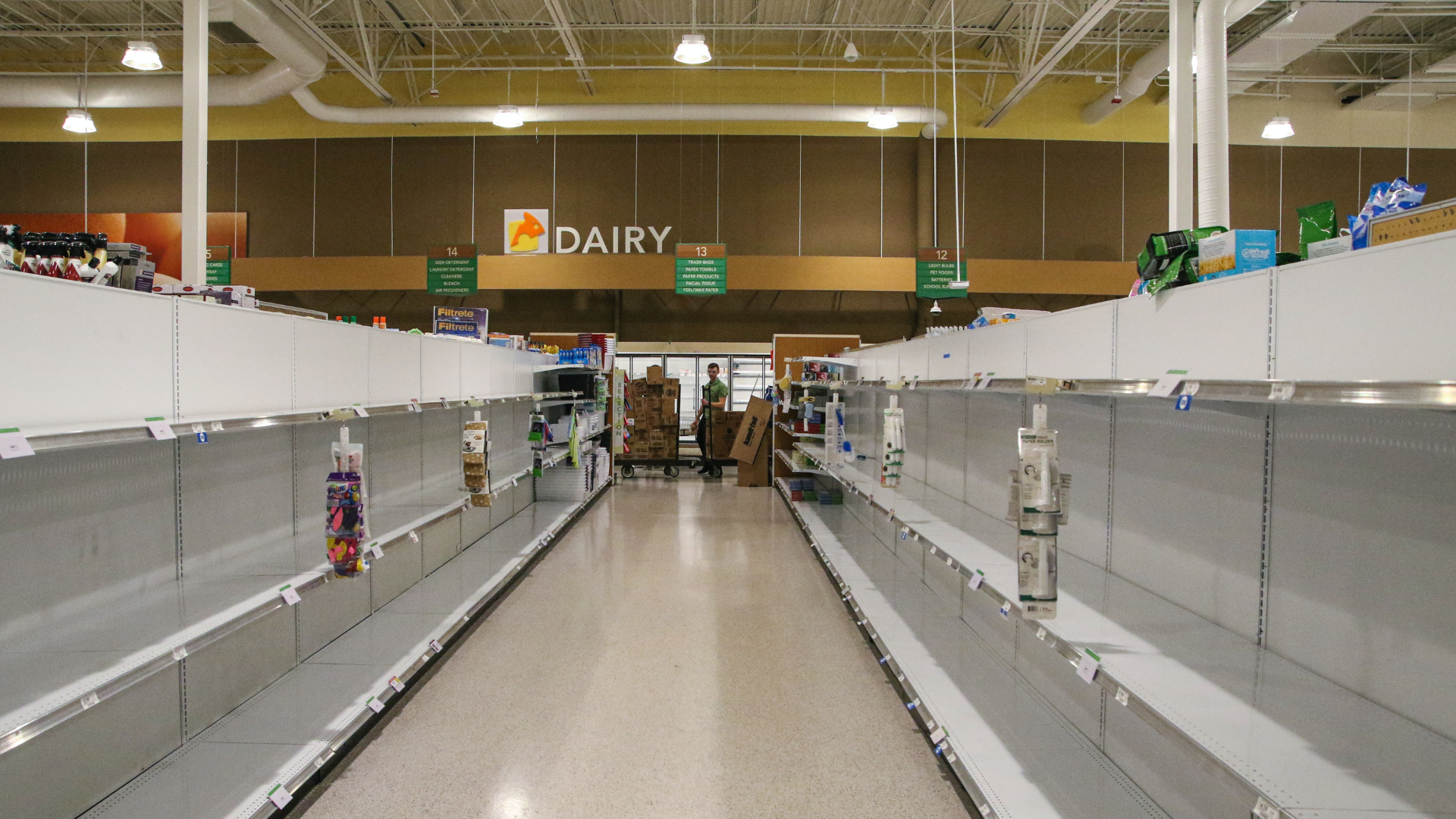Though province by province Canada is experiencing different levels of lockdown, the rise in vaccinations has given new hope to what a post-COVID-19 world could hold for employee engagement. The end is far from near, but it’s a fair time to look to the future.

Ketchum developed the “New Essentials: Working Lessons from the Pandemic” workplace study to determine what we can expect moving forward. The road is not going to be straight, and it’s not always going to be easy, but with a collective drive to create a work environment we can all enjoy, it will be a rewarding transformation.
More Than One Year in: Embracing and Managing the Changing Workplace
It’s part science, part spring weather and part wishful thinking: this sense of hope that we will soon start to emerge from the third (and hopefully final) wave of the COVID-19 pandemic in Canada.
In truth, we have more care and precautions ahead. But we’re at a moment in time to take stock. We all know the space (and headspace) we’ve been in for more than a year now. What’s coming into focus is where we’re headed next. The “New Essentials” workplace study in Canada suggests there will be twists in the road ahead — some challenging, some rewarding, many of them transformative.
The physical and emotional experience of work will be different.
We’ve heard a lot of rhetoric about the “return to work,” which is terminology we’d like to see eradicated. Work never ended when the pandemic began; it merely changed. Saying otherwise implies that people haven’t been working this whole time, when in actuality, people have been managing work, life and caregiving throughout the biggest crisis of our generation. Having said that, many organizations are making amendments to their workplace and allowing for a hybrid environment, where some people work from home, some work in the office and some do both. Workers have proven that working from home en masse can be successful, but we also can’t help but wonder what partially reoccupied offices will feel like. What will this new distribution of location mean for the culture and community organizations have worked so hard to build? And how do physical workspaces need to change to meet the reasons employees are coming in?
Three in four (73%) working Canadians say they are more likely to stay in their current jobs than they were before the pandemic. But employers shouldn’t take this for granted, as close to the same amount (77%) are also experiencing burnout in their job more than they were before the pandemic. So now is the time to nurture and support the employees that have stuck it out through this challenging period.
Employees adapted for us when we needed them to. And now, employers need to adapt for employees. This is the time to deploy new tools and creative techniques to engage the staff in meaningful ways, including morale, activities, roles, rewards and benefits.
Leadership is coming from different places, through different channels.
Throughout the unfolding crisis, most companies increased the frequency of their communications to employees, and their leaders displayed a large dose of empathy. Our study indicates the efforts have worked. When asked about the amount of communications they received from their employers about important updates and health and safety during the pandemic, 75% of Canadian workers stated it has been “just right.” Employers’ task is changing, not ending, but the secret ingredients will remain the same: creativity, listening and personalization. The territory we’re entering calls for empathetic and transparent leadership that uses communication to forge connections and foster community.
Over the next few months, vaccination against COVID-19 will take up a lot of the air in the room. When will you be able to get it? Do workplaces require it? Will there be vaccination passports or documents needed to get around? And what do employers do when only some of their employees have received the vaccine? As supplies and distribution slowly start to reach the population, the immediacy of that question will eventually give way to a longer-term question of policy and safety — and that will form a cornerstone of the hybrid workplace that’s coming.
We’re all eager to reengage. We know the road ahead is twisty. We can’t see past the first bend, much less far into the future. But if you’re like we are, it’s time to hit the gas and go find out.
Ketchum’s study is the beginning of a roadmap. Whatever vehicle carried you into and through 2020, the one that will drive you forward from here is a hybrid — a hybrid workforce, a hybrid workplace, a hybrid mindset. Grab the wheel.
Please check out the “New Essentials: Canada” workplace study, and reach out if you’d like to start a conversation.



